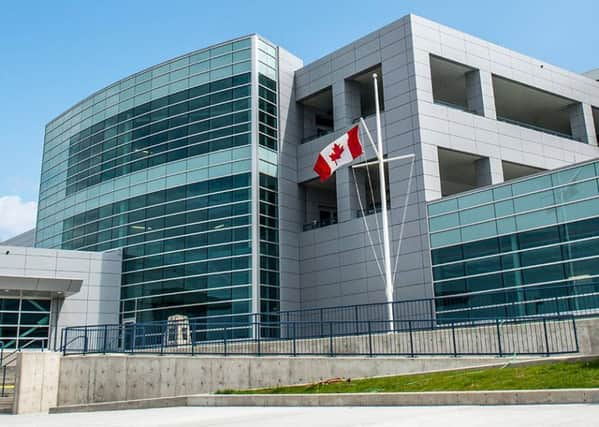O Canada! Worthing man finds Arundel Castle across the Atlantic


Peter Drew came across a reference online to an air force building at Victoria International Airport in British Columbia.
“I was scanning through the news headlines as I do while eating breakfast and saw a story of a serviceman who had died due to an industrial accident,” Mr Drew said.
Advertisement
Hide AdAdvertisement
Hide Ad“At the bottom of the headline there were other news stories about this tragedy and one had a photo of the place where it happened.
“Imagine my surprise at seeing the Arundel Castle name and the history of why such a building was named after Canadian World War Two forces stationed in Arundel.”
Originally from Worthing, Mr Drew and his wife converted and owned an air raid shelter in Manor Road in Worthing for eight years before they moved to Canada in 1999
They now live in Nova Scotia, 2,766 miles away from their former home in Sussex.
Advertisement
Hide AdAdvertisement
Hide AdThe Canadian ‘Arundel Castle’ is a hangar at Victoria airport used by 443 Maritime Helicopter Squadron, part of the Royal Canadian Air Force (RCAF).
Known as the “Hornet Squadron” during WWII, the squadron was stationed in the area surrounding the Sussex castle between May 14, 1944 and June 15, 1944.
The squadron archives state: “RAF Station Ford lay in a pleasant area on the coastal plain two miles from the sea.
“To the south it looked upon the Channel, while to the north it commanded a beautiful view of the South Downs, pleasantly wooded and dominated by Arundel Castle.”
Advertisement
Hide AdAdvertisement
Hide AdA spokesperson for 443 Maritime Helicopter Squadron said: “While 443 Squadron only operated from this station for a short period of time, it is one of immense historical significance to the unit.
“It was from this location that 443 Squadron supported the Normandy D-Day landings and helped protect the precarious beachhead in the crucial days that followed.
“The unit then subsequently deployed from Ford to St-Croix-Sur-Mer in France as part of the first RCAF fighter wing to be based on the continent.”